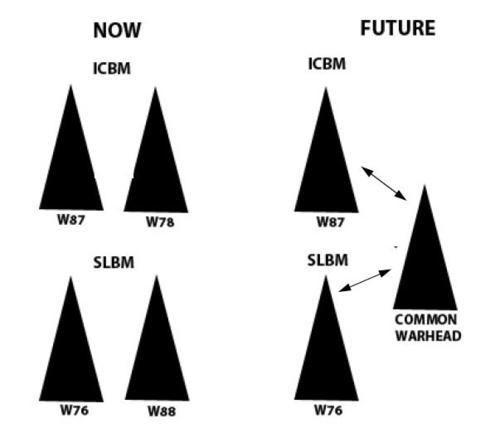
On Monday, when the Obama administration releases its FY13 budget request, it will announce a delay in the construction of a proposed new facility at the Los Alamos National Laboratory (LANL)—the so-called Chemistry and Metallurgy Research Replacement-Nuclear Facility (CMRR-NF). As we discuss in a new UCS working paper, we think a delay is good.There are three possible reasons to build the CMRR-NF:
1. To allow an increase in pit production capacity. Pits are produced at LANL’s Plutonium Facility-4 (PF-4), which currently can produce 10 to 20 pits annually. But that rate could be increased to 50 annually without building the CMRR-NF. Building the CMRR-NF would allow PF-4 to up production to 50 to 80 pits a year by moving some of the work now done in PF-4 into the CMRR-NF.
2. To provide replacement laboratory space for activities now undertaken elsewhere.
3. To provide additional storage space for plutonium and other nuclear materials.
Our paper shows that the only plausible need to increase pit production capacity above the current level of 10-20 annually is to support a life extension program (LEP) for the W78 and W88 warheads—if they use new pits. However, even in this case, an annual production capacity of 40-45 pits would be adequate, and this could be accomplished without building CMRR-NF. If the United States reduced its arsenal below 3,500 weapons over the next few decades, an even lower annual production capacity would be required.
In any event, the National Nuclear Security Administration (NNSA) hasn’t yet made a decision to use new pits for the W78 and W88 LEPs, and the studies and engineering phase for the W78 will not be complete until FY21. Thus, there is as yet no identified need for an increase in pit production capacity beyond even the 10 to 20 pits per year. (There would also be concerns about such a “mix and match” approach to maintaining the stockpile. Such an ambitious LEP will face not only steep technical challenges but deep skepticism from Congress.)
The CMRR-NF would provide additional laboratory and storage space for handling plutonium and other radioactive materials, but there are other, likely less expensive, approaches. Delaying construction will allow these other options to be assessed. Given today’s budget climate, that makes sense.
It’s important to keep in mind that plans for the CMRR-NF were made long before the New START agreement was negotiated and Obama’s 2010 Nuclear Posture Review was completed. And, following a lengthy Pentagon-led review of options, the President will soon make decisions about the size, structure and mission of U.S. nuclear forces, which will likely result in a smaller U.S. arsenal. Thus, delaying construction of the CMRR-NF will also provide time for the administration to take these nuclear weapons policy changes into account.
